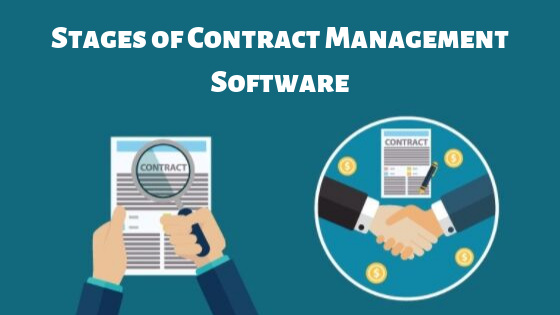In a market-driven by high technologies, ever-evolving compliance criteria, and robust competition, success may hinge on the particulars of not only one, but an intricate web of arrangements affecting your whole business enterprise. You want a strong, comprehensive toolset for suitable arrangement lifecycle direction (CLM).
Each company differs. However, a thorough comprehension of contract Lifecycle management is crucial to successful risk management, in addition to building strong relationships which encourage the aims of your company. And if your company deals with ten trades or tens of thousands, executing an intuitive, automatic CLM system might help improve legal compliance and lower your liability exposure.
What’s Contract Lifecycle Management?
More than just a simple file or a pile of newspaper, a contract supplies both an arrangement between your company and a different party and the basis for a continuing relationship. Contract management is a way of organizing contracts and arrangements, and the association between the parties involved.
CLM is a very efficient and reliable means to plan and implement each phase of the contract lifecycle.
The Stages of Contract Lifecycle Management
Like most contracts, effective contract management alternative isn’t a monolithic endeavor but instead broken into different parts with particular functions. The very best method to guarantee your agreements decrease risk, optimize compliance and strengthen your business’s bottom line across the entire contract lifecycle is to earn contract direction software as the heart of your contract workflow procedure. Centralized applications move your crucial contracts from dusty file drawers and sprinkled hard drives into the cloud, in which it could be retrieved, analyzed, and put to great use.
With CLM applications, particularly within a procurement applications package, the contract management Procedure is easily broken into nine measures:
#Group and Organization
Once they have been accumulated and sorted, the arrangement information could be moved to contract management applications for analysis, legal review, and utilize in creating contract templates to get new contracts.
Having a library of contracts, documents management may be employed to target crucial data and monitor it to make certain terms are satisfied and milestones are attained. CLM applications greatly simplifies this process and makes it effortless to spot and protect against possible compliance problems at a glance.
Additionally, it gives simple searching, retrieval, and sharing through contract production for many customers, and facilitates an audit course, if necessary.
This phase of the contract management process concentrates on contract authoring, or the production of contract templates. Additionally, it allows for the introduction of a clause library–a selection of frequently-used exemptions, such as terms and conditions, for simple reference and enhanced efficacy. Additionally, consent to ask, create and accept new contracts could be awarded to both legal and business staff members, according to their roles in your business.
#Contract Generation and Structure
With management applications, jobs that used to carry hundreds of (and expensive ) work hours are compact and optimized in this stage of the contracting procedure. Office staff may utilize a self-service program or magician to make customize contracts reviewed and accepted by your legal staff as required. The management applications that you choose will integrate with programs like Microsoft Word and acceptance techniques like Docusign for much higher efficiency and ease of use.
They can also incorporate your information into contracts filed by external parties and correct them to guarantee compliance and to support business goals for your connection.
#Inspection and Approval
Without a detailed approval process, an otherwise assuring arrangement can quickly bring ruin to a business’s bottom line. Establishing an endorsement workflow leads each contract into the appropriate member of your group for review and acceptance.
Contracts created with pre-approved templates will probably have a speedy acceptance journey. New contracts and people needing special approval from management, legal, accounting, etc. could be flagged and sent to the perfect individual for inspection.
After inspection, any arrangement that should be modified may be flagged along with a record of necessary changes generated. Using a topnotch CLM system, reviewers may compare the original and new contractual documents in actual time and also make the required revisions while retaining all appropriate team members at the loop through revisions and re-negotiations.
Using a CLM program solution setup, signing heaps of newspaper moves the way of this quill and ink pot. Finalized and approved contracts could be signed using a stored digital signature or a third party secured software crucial. The arrangement becomes a part of this central repository, and also the final authorized version is automatically in relation to the accepted variation to prevent unauthorized alterations.
#Evaluation and Reporting
Everybody from senior management to legal and risk management personnel can quickly retrieve and examine key contract information using a centralized contract management solution set up. Along with tracking ongoing hazard vulnerability and contract cycle times and provisions, your staff may also search and use the information in your repository to make comprehensive reports.
A lapsed contract may create costly and potentially catastrophic financial consequences to your company in addition to some other parties involved. Management applications like pc monitoring software helps businesses keep a close watch on expiration dates and supplies the performance information necessary to plan correctly for renegotiation and contract renewals.
While it’s particular advantages at each point of the Whole contract lifecycle, Contract Management Solutions making life easier and also provides overall benefits that enhance your company’s overall efficacy, functionality, and earnings, for example:
- Streamlining the contracting procedure using a centered, collaborative alternative
- Comprehensive visibility of contract information for many team members
- Decreased overhead costs for contract creation
- Greatly enhanced contract consistency and decreased redundancy
- Improved hazard reduction and earnings monitoring
- Greater provider compliance and more powerful connections
- Improved communication in Any Way levels of your company
- Simplified legal compliance for quicker, bigger return on investment (ROI)
- Improved procurement efficiency and value production

